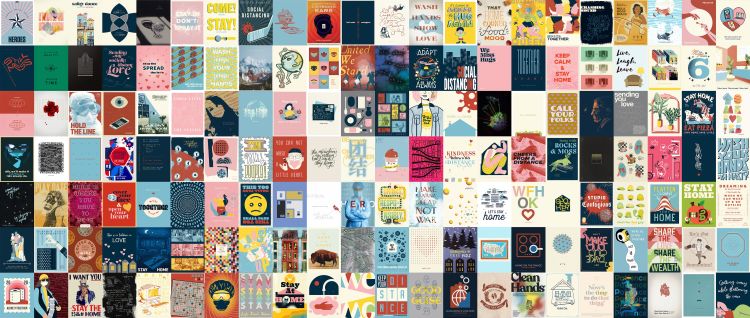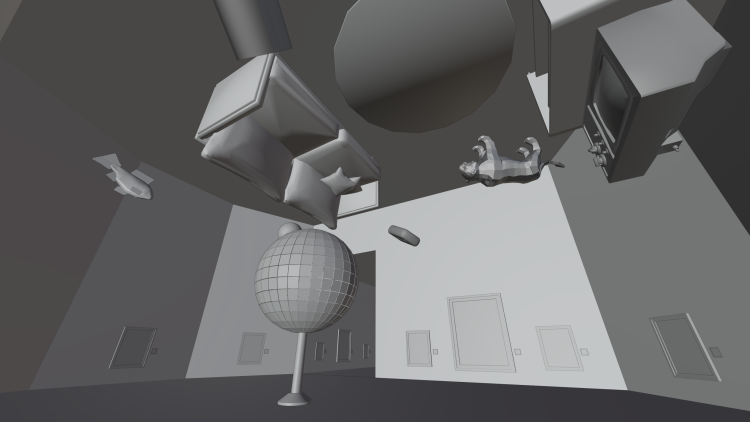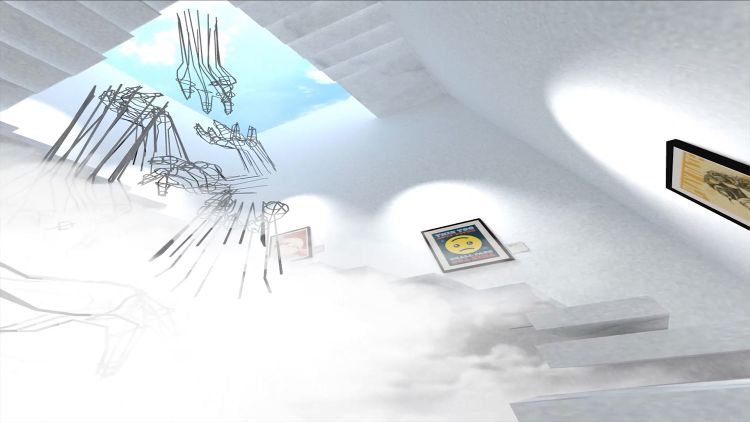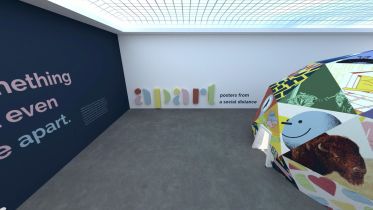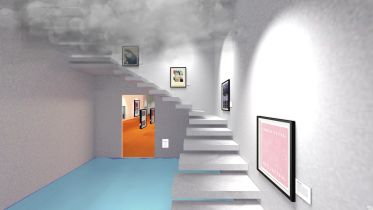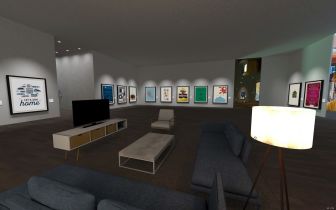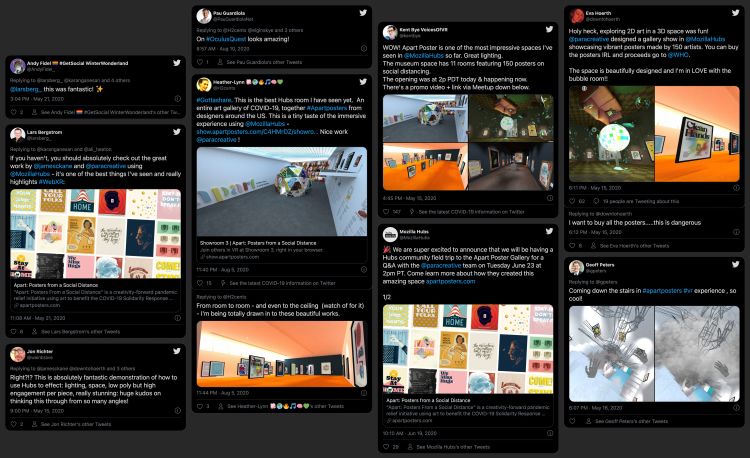We are a group of creative people who help organizations make their ideas beautiful.
Pushing the limits of web-based virtual reality
Apart: Posters from a Social Distance
A Virtual World for the Web in Uncertain Times
CHALLENGE
SOLUTION
SERVICES
It’s one of the
best things
I’ve seen.
— Lars Bergstrom, Google | Director of Engineering
I can’t even express how cool this gallery experience was. The interactive video dome room and video wall blew me away. The whole time I felt like I was in a museum exhibit.
— Amber Osborne, Mozilla | Senior Product Marketing Strategist
HOW IT HAPPENED
We had the posters. We had the cause. But we needed a virtual art gallery. And we needed to build it from the ground up.
The museum-scale exhibit was built on top of Mozilla’s Hubs platform, and utilized an entirely open-source, web-based software stack including three.js/WebGL, the emerging WebXR spec, and on-demand Blender supercomputers for cloud rendering. Together, these made the gallery widely accessible via web and mobile browsers and in virtual reality, all while breaking new ground in terms of the scale and volume of content possible in social VR at the time.

An early virtual gallery floorplan sketch.
Meetings to review early virtual gallery space designs happened in virtual reality inside the early versions of the gallery space.
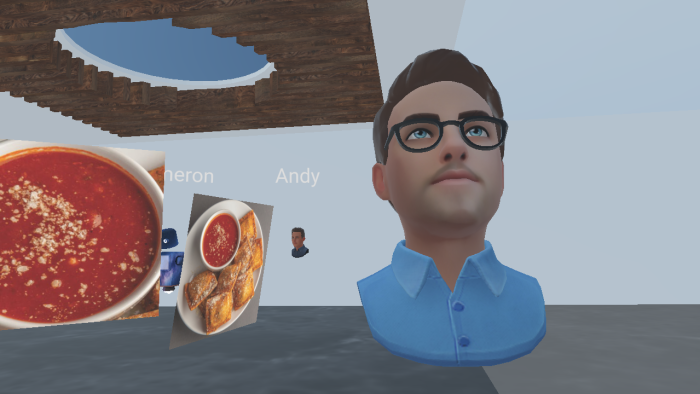
Meeting snacks taste much better in actual reality.


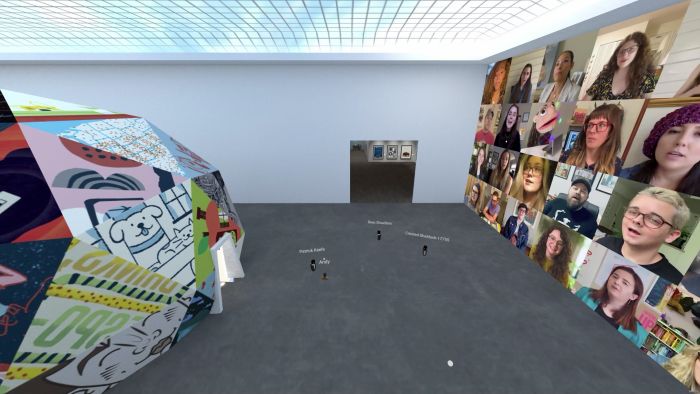
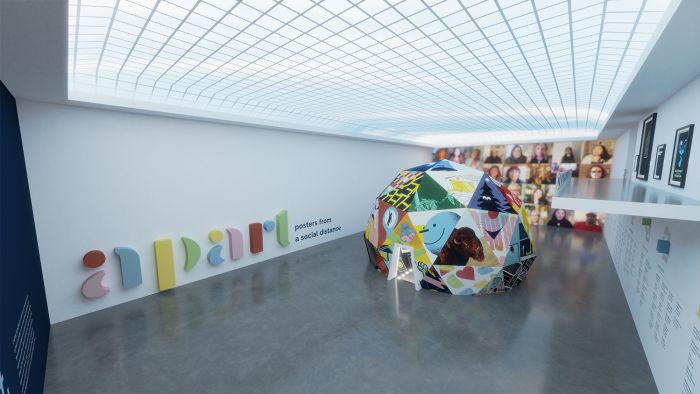
Two years after launch, we undertook a full technical art optimization, implementing all we’d learned in the interceding years to double resolution and halve memory use.
The next generation of Paradowskians designed and built a new retrospective wing featuring interactive exhibits, responsive animations and in-depth technical explanations of the custom coding.
To enjoy the posters and experience our virtual gallery, visit apartposters.com.
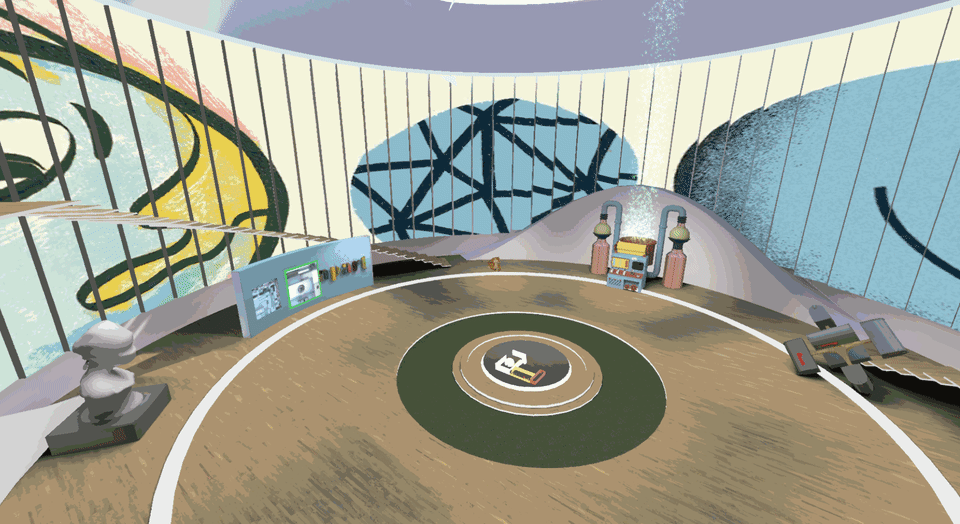
Retrospective exhibit in the "basement" of the original Apart gallery.
